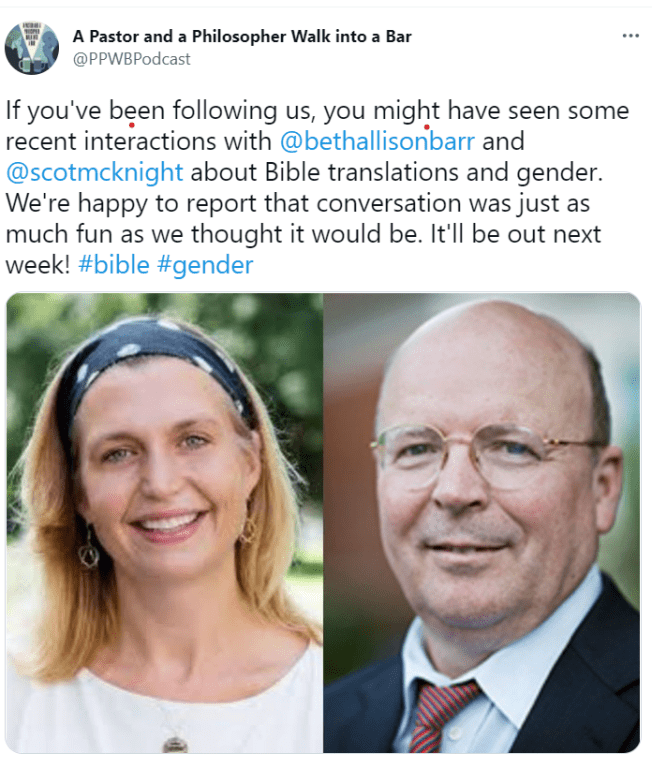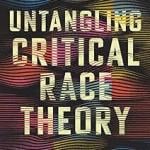 Late in 1999, while the world panicked about Y2K (remember that?), I ordered a new Bible–a modern printing of the 1611 KJV. I was working on my Latin, using the Vulgate New Testament for my Bible reading, and wanted a ‘cheat version’ to check myself.
Late in 1999, while the world panicked about Y2K (remember that?), I ordered a new Bible–a modern printing of the 1611 KJV. I was working on my Latin, using the Vulgate New Testament for my Bible reading, and wanted a ‘cheat version’ to check myself.
But that wasn’t the only reason. I wanted a 1611 KJV because it contained the Jewish apocrypha.
You see, my husband was interviewing for an Associate Pastor position deep in the heart of KJV-only territory. For those of you who have never encountered this particular manifestation of fundamentalism, KJV-onlyism is a “conspiracy theory” that the KJV is the only ‘untainted’ translation of the Bible. Indeed, not far from the church we were considering, a pastor had burned part of the Revised Standard Version (the RSV) when it was published in 1952–declaring it a “fraud” and associating it with Satan. While the church we were considering assured us we could still use different versions of the Bible on our own time, it was recommended that we make sure to use the KJV at church.
So I ordered a 1611 KJV–the first publication of the translation made by King James’ 54 scholars assembled to translate the “whole Bible, as consonant as can be to the original Hebrew and Greek”. Shortly after the publication in 1611, the KJV went through multiple editions in which the biblical text was frequently changed. Yet folk believed that the KJV was the most “authentic” version of the Bible even while rejecting the apocrypha (included in the KJV from 1611 until 1769). I decided it was probably due to a dearth in historical knowledge; most KJV-only folk didn’t realize that the apocrypha was originally included.
I was right about this. Carrying my 1611 KJV to church aroused the curiosity of many folk–launching fruitful conversations about the reality of Bible translations. I got to recommend Bruce Metzger on more than one occasion. Yet, those conversations also reinforced how much evangelicals just don’t know about Bible translations.
Almost three months after the publication of The Making of Biblical Womanhood: How the Subjugation of Women Became Gospel Truth, the most consistent question I have received is about Bible translations–which version is ‘most accurate’, especially when it comes to gender.
I have a quick answer for you, and then two longer answers.
The quick answer: all current mainstream Bible translations–from the NIV to ESV to KJV to NASB–are pretty accurate. But all are also translated by people who do not approach texts with objectivity. We carry our preconceptions, cultural baggage, and own ideas to the text. Isn’t it miraculous how little we have messed up God’s salvation message? Studying Bible translations has only strengthened my faith as I have realized how the same salvation message heard by early church and medieval Christians is (pretty much) the same salvation message we hear today (see chapter 5 of The Making of Biblical Womanhood). At the same time, differences among Bible translations do matter. It matters that the ESV dismisses Junia as “well known to the apostles” instead of recognizing her as “among the apostles”. It matters that the KJV normalized androcentric language (man and mankind) instead of gender inclusive language (human, brothers and sisters, etc.).
My quick answer has become longer than I intended, so I will get to the point: pay attention to who translated the Bible translation you use. Look at the introduction and learn about the editorial board. Is it all men? Is it men mostly from a particular theological bent? Check out Marg Mowczko’s short piece on female bible translators here. You have heard the unexamined life is not worth living (Socrates)? I would contend that the unexamined Bible translation is not worth reading. That is my biggest piece of advice–know who translated the Bible you use and why they translated it. My second piece of advice is don’t limit yourself to one translation. I actually use a variety–the NIV, 1611 KJV, and NRSV are the most frequent Bible translations I use every week.
As for my longer answers. First, check out the podcast Scot McKnight and I did with A Pastor and A Philosopher Walk Into a Bar. It releases today and you can learn much more about what both Scot and I think about Bible translations and their history.
Second, I asked Scot McKnight–one of the foremost New Testament scholars today–to tell me about his forthcoming translation of the New Testament. I love his answers as they reveal the decisions made by a Bible translator in action, and they also make me really excited about his forthcoming translation!
(BAB) Why did you decide to do a New Testament translation?
- (McKnight) The odd thing is that I fell into this. I have long thought the art of making the Bible sound contemporary English has been mastered, even if it does have to redo itself every decade or two. But, in the process of mastering that art we now are capable of making people forget these books are ancient–some in Hebrew, a bit in Aramaic, and some in Greek. The original audiences are no longer sensed by our modern English-speaking audience. John Goldingay dug in his heels when he translated the OT as “The First Testament,” and when I read it I said, “That’s it. This is the translation we need.” Then, when they published Goldingay’s with N.T. Wright’s modern-English-sounding “Kingdom New Testament,” I said to the publisher in the USA, “Why in the world are these two bound together? Their theories are completely different.” The editor then suggested I do a translation like Goldingay’s for the New Testament. I said “Yes, indeedy!” on the spot.
(BAB) What is your main goal for this translation?
- (McKnight) To give people a stunning realization that this text was not in English but Greek; to transliterate names; to give the clunky feel that Greek at times has; to give Greek terms one English equivalent if possible; in other words, to make readers feel like the NT is not as familiar as they may have thought. The best anticipated response I can have is the sense some will have at times of this question: “Wow, I’m not sure I have ever read this verse before.” (I’ve asked this many times reading Goldingay).
(BAB) Could you give us an example of one of the translation decisions you made to help keep the first-century feel of the text?
- (McKnight) I have asked the publisher to put some verses in that Greek-looking font (Herculanum) to help people realize this was a letter. I have used “siblings” for “brothers” or “brothers and sisters” and I have used “Yōannēs” and not John. I have not used the word “justify” in any of its forms but “right” and I have made “faith/believe” into “trust” or “allegiance.”
(BAB) What is the most difficult decision you had to make as a translator?
- (McKnight) How to translate “andreia” (1 Corinthians 16:13): “manly” or “courageous”? Does “save” work for our readers today or do we need something like “liberate” or “redeem”?
(BAB) What is the best book or two that can help ordinary Christians better understand the translation process?
- (McKnight) Here’s the problem: books on translation get into the weeds, deep ones at times, because the simple theory runs out in a few pages. I like Mark Polizotti’s “Sympathy for the Traitor” as it is quite fun as is Robert Alter’s “The Art of Bible Translation.”
(BAB) What has working on biblical translations taught you about the Christian faith?
- (McKnight)We are almost all 100% dependent on Bible translators. Very very few can read the whole Bible in the original language. Those who don’t see the power of the translator are missing the opportunity to engage the very demanding, discerning, small-judgments that have to be made every minute of translation. God chose to communicate with us through a text that becomes vulnerable to use the moment we translate it and use it. God chose, therefore, a flexible medium to speak the truths of redemption. Amazing.

















